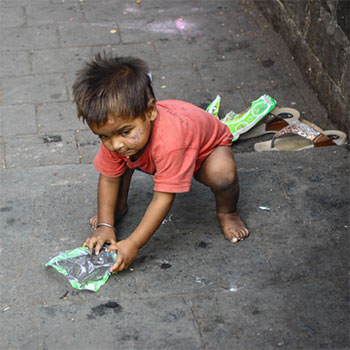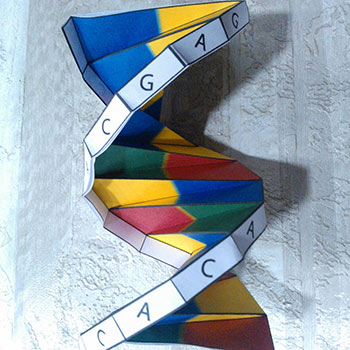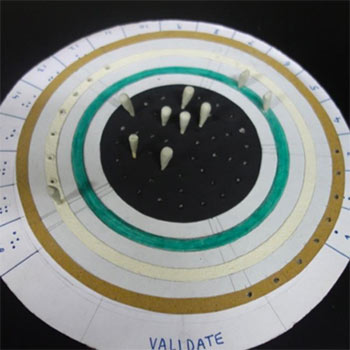The path to education for visually challenged is filled with many challenges. There are primarily two approaches to teach visually challenged students: special education in a blind class or school, or integrated education along with sighted students. Traditionally, blind schools have been the approach to delivering education. Currently, there is a movement towards integrated and inclusive education being considered a better approach. Visually challenged students need to learn certain compensatory skills such as Braille, in the early stages. They also need to develop concepts through certain adaptations in curriculum, and hands-on activities and experiences. At school level, many topics are omitted because of content being highly visual in nature, especially certain topics in mathematics, science or geography. Teachers and students both face difficulties in teaching and grasping such topics. We identified chemistry as an area of focus after discussions with professionals in education and teachers, and a survey of educational aids and facilities at Smt. Kamla Mehata Dadar School for Blind. Chemistry has a lot of visual aspects involved in teaching—e.g. shapes, colour changes in reactions, litmus papers, etc. and is also unsafe when it comes to performing experiments, due to strong acids and bases, and glass equipment. So, quite often, concepts are only taught in the classroom as a normal lecture, with little hands-on activities for the reinforcement of concepts. Based on the studies and interaction with educators, we designed Atomatic—a chemistry learning aid that lets students explore and discover the concepts of the atomic model (Rutherford-Bohr model). It allows a student to construct an atom with its constituents—protons, neutrons and electrons. The device is a board with holes to put in pegs which represent the constituents. As the student tries various combinations, the board guides them through sounds and voice towards making a valid combination. When a valid stable atom is created on the board by the student, information about the atom is spoken out by the board. While the larger goal would have been to work with chemical experiments, as the students were not yet ready with basics, we decided to start at the basic point, i.e. the atom. In designing for visually challenged, we understood that an inclusive approach would be more effective, so that blind, partially blind and sighted students can use it equally. The product provides and engaging game-like experience, and has two levels of complexity. An attempt has been made to make it low cost and scalable. Preliminary evaluations with teachers suggest that the product would be appropriate in teaching students the concepts and would not involve many usability challenges. The product will be evaluated with visually challenged students from at Smt. Kamla Mehta Dadar School for Blind and Xavier’s Resource Centre for Visually Challenged, and sighted students from Kendriya Vidyalaya at IIT Bombay. We hope that the product would prove an effecting learning aid, with minimal usability challenges.




